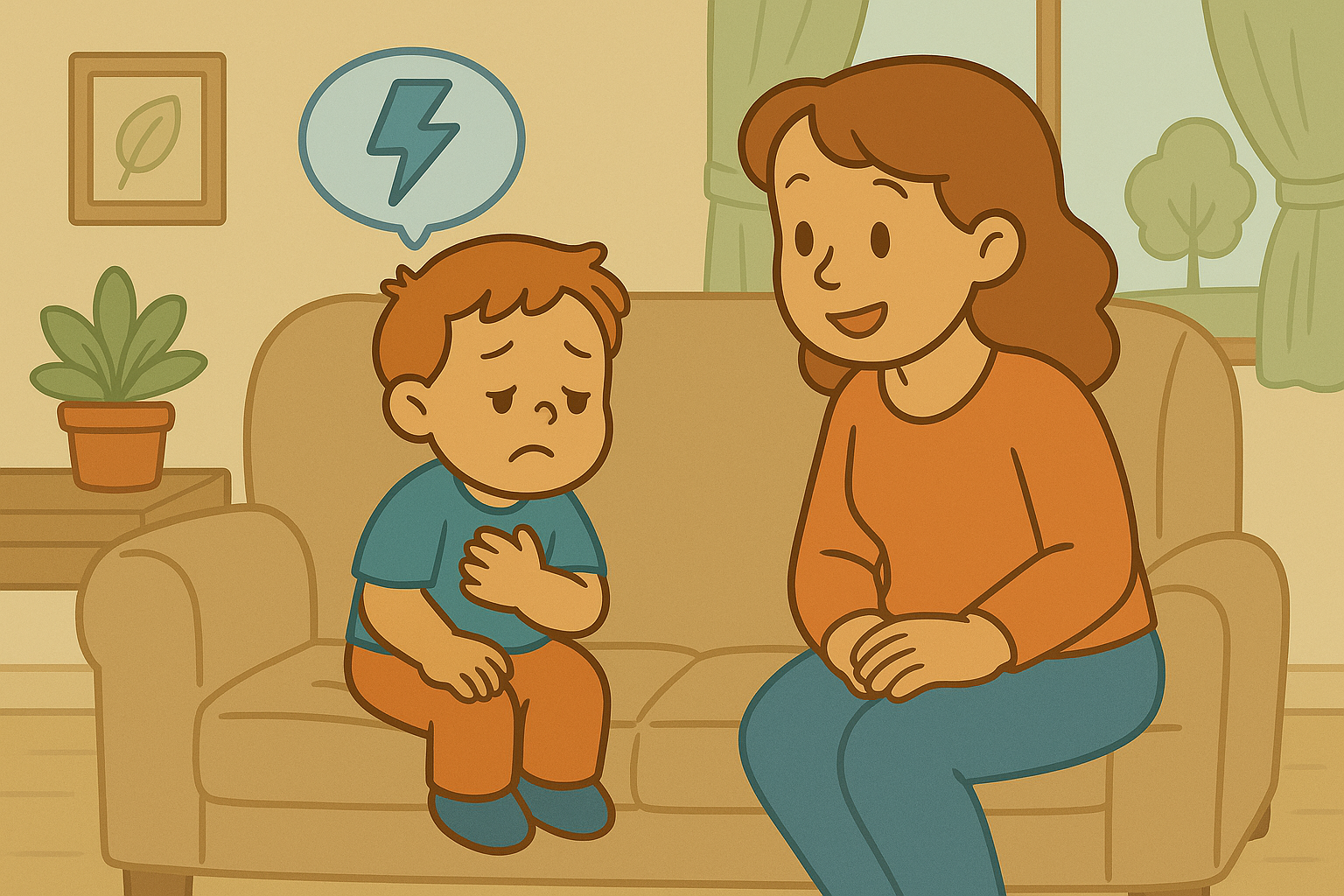Encouraging Kids to Identify and Name Their Triggers
Encouraging Kids to Identify and Name Their Triggers
Everyone has things that set off big feelings — loud noises, losing a game, being rushed, unexpected changes, or even a sibling grabbing a favorite toy. For young children, these emotional “triggers” can feel confusing and overwhelming. They often react before they understand why.
When kids learn to spot what causes their emotional spikes, they gain control, feel safer in social settings, and develop stronger self-advocacy. We can’t remove all triggers from life — but we can teach kids to recognize, name, and manage them.
1. Explain What a Trigger Is (Simply)
Keep language gentle:
“A trigger is something that makes your feelings get really big, really fast.”
Triggers aren’t bad or dramatic — just signals. Reframing them helps kids learn without shame.
This gentle language mirrors guidance from Helping Kids Express Sadness Without Shame.
2. Start With Body Clues
Big feelings show up in the body before the brain catches up. Teach kids to notice:
tight shoulders
clenched fists
wiggly legs
fast heartbeat
upset tummy
Say:
“When your body talks, it’s trying to tell you something.”
Noticing body clues builds early emotional awareness, similar to strategies in The Science of Emotional Regulation in Children.
3. Identify Patterns After the Moment
Once calm, explore gently:
“What happened right before your feelings got big?”
“Was there something that bothered you?”
Look for triggers such as:
being interrupted,
losing a turn,
transitions,
noise,
hunger,
crowds.
Keep questions short.
4. Normalize Triggers for Everyone
Say things like:
“Everyone has triggers — even grown-ups.”
Share examples, such as:
“It’s hard for me when plans change suddenly.”
“I feel stressed when I’m rushed.”
Kids relax when they realize big feelings don’t mean “I’m bad.”
5. Use Storytime to Spot Triggers in Characters
Ask:
“What triggered the character?”
“What happened first?”
Kids learn to read emotional cause and effect safely in stories.
This reinforces emotional literacy skills from Emotional Storytime: Books That Build Empathy and Insight.
6. Create a Trigger Menu
Visuals help. Draw simple icons for:
waiting,
noise,
losing,
sharing,
transitions,
hunger,
tiredness.
Kids can point instead of struggling to explain. That lowers shame and increases self-awareness.
This complements emotional vocabulary building from Building Emotional Vocabulary Through Books.
7. Give Concrete Language for Triggers
Offer scripts:
“Waiting is hard for me.”
“When it’s loud, I feel stressed.”
“I get upset when plans change.”
Scripts reduce meltdown risk and build confidence.
8. Practice Mini Coping Strategies for Each Trigger
Pair triggers with tools:
Noise trigger → headphones, quiet corner
Transition trigger → countdown or song
Losing trigger → deep breath + “try again” mantra
Change trigger → preview schedule
Kids learn:
triggers don’t control me — I have tools.
These tools echo calming strategies from Creating “Calm Corners” in Classrooms or Homes.
9. Role-Play Trigger Moments
Use toys or puppets:
“Puppet gets upset when she waits too long. What can she try?”
Kids offer empathy to puppets (and secretly to themselves).
This pairs seamlessly with Using Puppet Skits to Explore Feelings and Friendship.
10. Celebrate Noticing (Not Just Calming)
Say:
“You noticed your trigger — that’s huge!”
Spotlighting awareness builds identity:
“I’m learning.”
“I can improve.”
“I can handle this.”
This praise style aligns with The Power of Praise: When and How to Use It.
Helping kids recognize their triggers builds emotional confidence and self-advocacy. When you teach body clues, offer gentle scripts, role-play tricky moments, and celebrate awareness, you show your child that big feelings have causes — and solutions. Over time, triggers feel less scary, control returns to your child, and resilience grows.
This content is for educational purposes and is not a substitute for professional medical or psychological advice.
Popular Parenting Articles


